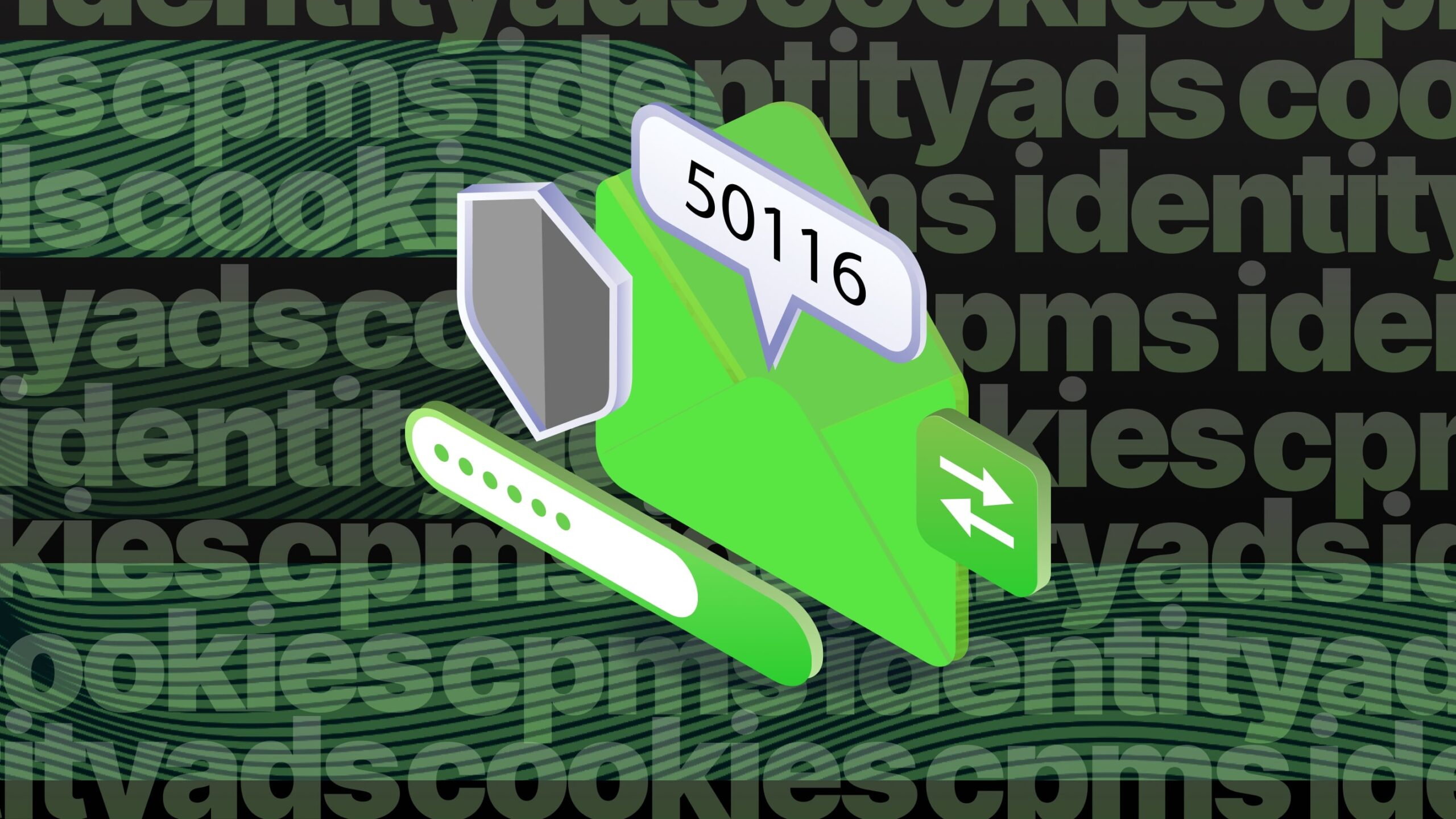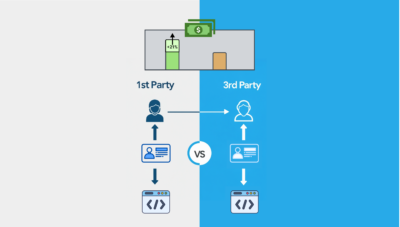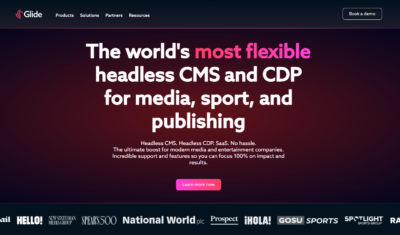Digital advertising is undergoing significant changes. Contributing factors include evolving privacy regulations and the removal of third-party cookies from browsers. The pace of change has created a divide between those adopting new strategies and those relying on outdated methods, with this gap most pronounced among web publishers.
With third-party cookies nearly extinct, first-party data has taken center stage. ‘Identity’ solutions, focused on matching publisher-collected user emails and phone numbers, have emerged as the preferred method to replace the targeting quality advertisers and agencies are eager to maintain. Identity solutions refer broadly to a form of personalized data that complies with established privacy regulations and standards. This means protecting personally identifiable data by securely ‘hashing’ and serializing it, allowing advertisers and publishers to keep user data anonymous while matching users with campaigns via a unique identifier (ad ID).
CPM Boost and Revenue Opportunities for Websites
Implementing user identity solutions requires adopting new protocols, which are unfamiliar to many sites, for dozens of relevant identity providers to maximize revenue. Platforms like Ezoic’s ezID have recently improved the ease of setting up and capitalizing on these new revenue streams by offering a simple way to upload or connect their list once, hash user data, and create universal IDs for all providers. These emerging platforms, which connect to relevant exchanges and ad partners, have made adopting first-party data solutions much easier for publishers, leading to higher adoption rates.
The latest data shows publishers are benefitting from the first-party data trend. Sites implementing identity solutions using ezID have seen clear CPM improvements in several notable areas.
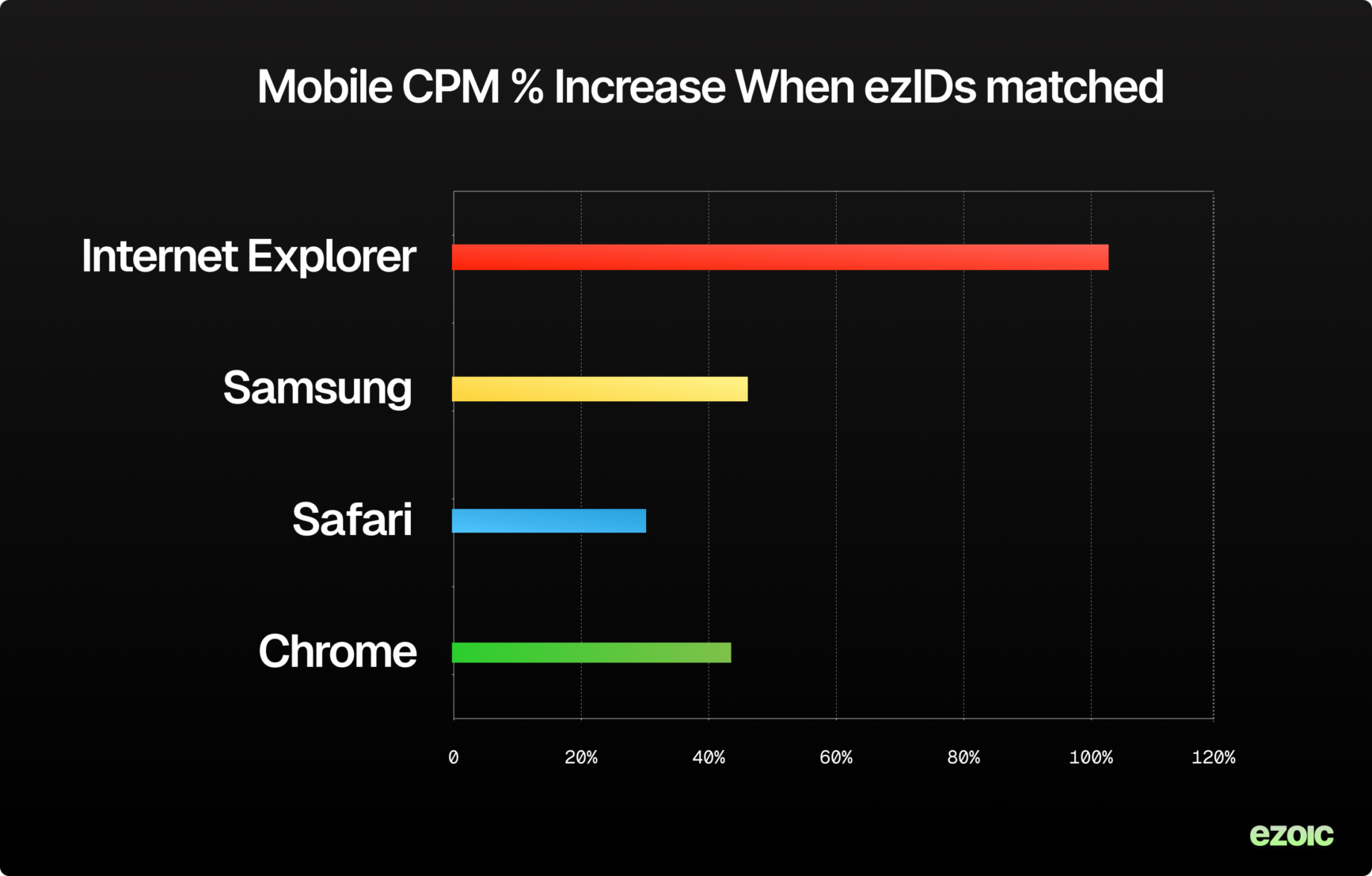
Mobile Ad Revenue Increases:
- Chrome traffic saw a 46% CPM uplift, mostly on mobile.
- Safari saw a 31% uplift on mobile.
- Samsung Browser saw a 47% uplift on mobile.
- Internet Explorer saw the largest increase with a 104% uplift.
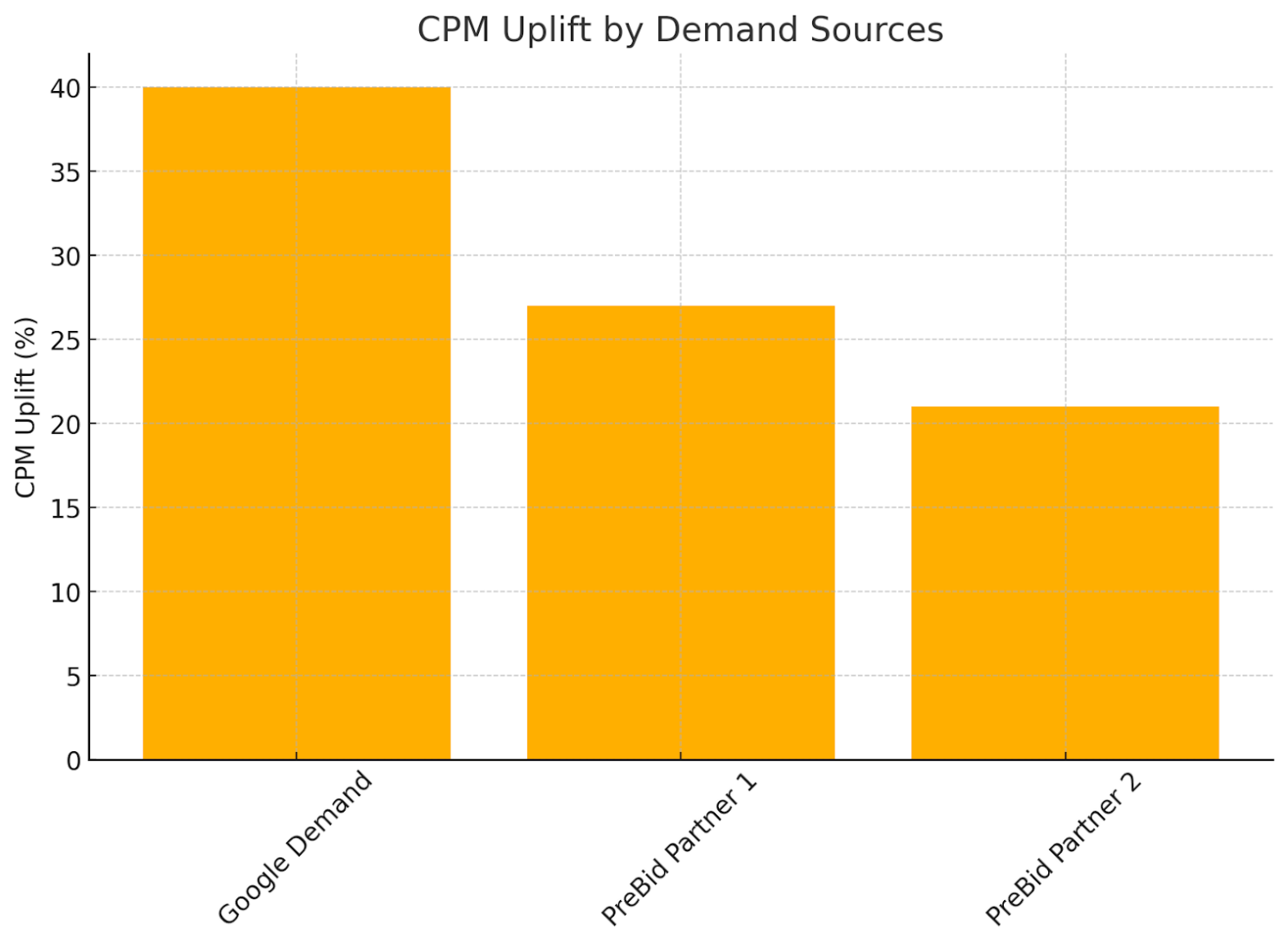
Direct Advertiser Deals: With unique and accurate datasets, publishers are more likely to secure direct deals with advertisers interested in specific niches, often leading to higher negotiated CPMs. The value of matched audiences was evident as various ecosystem bidding partners independently increased bids on sites with first-party data solutions in place.
- Google demand saw a 40% CPM uplift.
- Popular Prebid partners averaged a 25% increase in CPMs.

More Bidders Competing:
- Domains using ezID saw a 2x increase in ad fill rate (greater advertiser willingness to buy inventory) even when users weren’t matched to an identity.
- For matched identity users (users with IDs targeted by advertisers), the RPS (revenue per thousand visitors) increased by 2x.
- A 13% overall traffic increase compared to traffic before implementing first-party data solutions, a result that had been proposed but not widely evidenced before.
Better Metrics on Audience Value:
Enhanced data insights improve current ad revenue and allow publishers to streamline their content strategies to better align with audience preferences, fostering growth in site traffic and ad inventory.
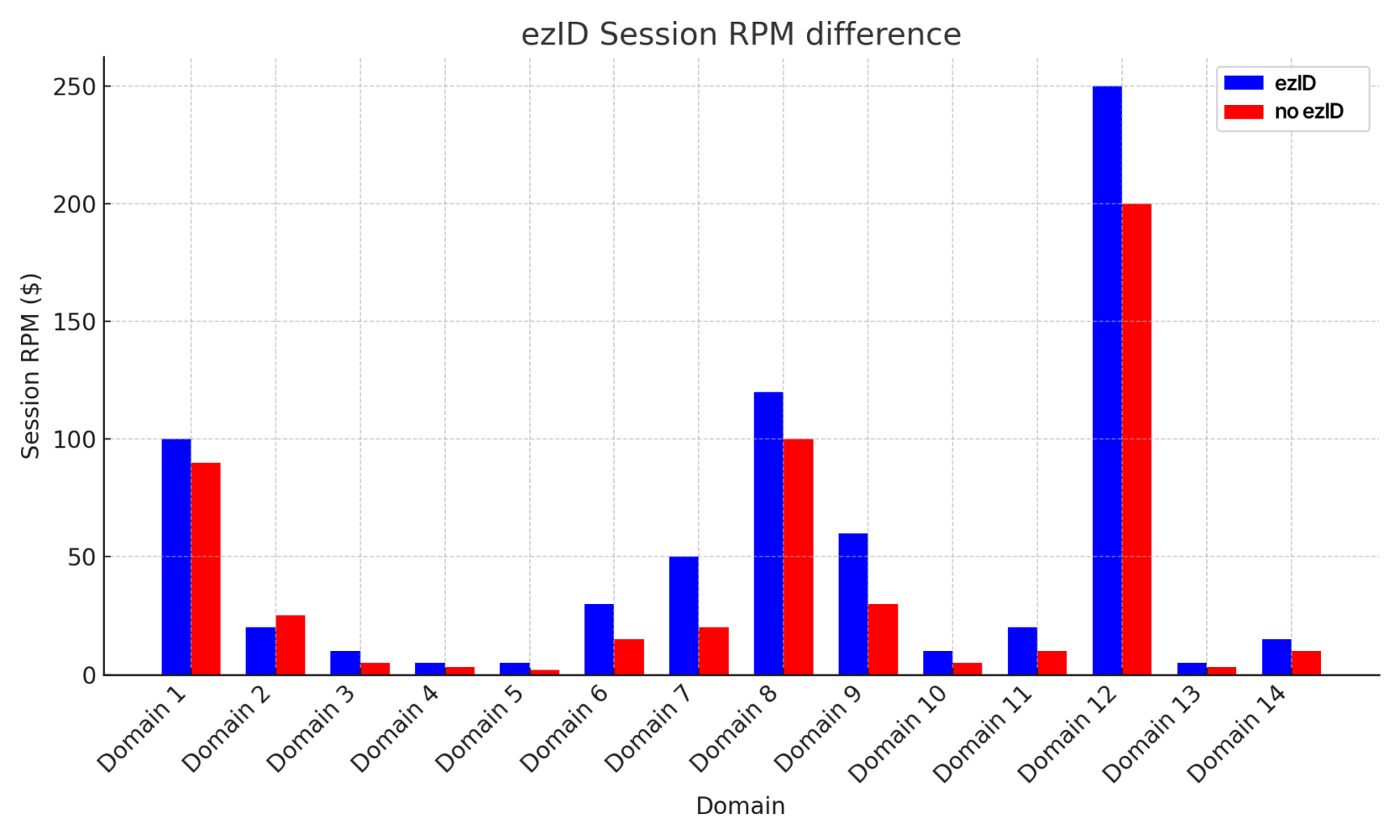
‘Audience’ Rapidly Replacing Content as King
First-party data refers to information publishers collect directly from their audiences, such as user behavior, preferences, and interactions. Unlike third-party data, first-party data is both sustainable and defensible for websites. As no content can be unique or high-quality enough to be fully safe from LLMs, one key takeaway from the rise of YouTubers and social media publishers is their strong relationships with their audiences. An audience mitigates the risks publishers often face from key traffic sources like search engines.
- Ownership and Control: One of the most significant advantages of first-party data is that publishers own it. This gives them full control over collecting, processing, and using it.
- Accuracy and Relevance: First-party data is directly collected, making it highly accurate. This improves audience targeting and personalization, translating to higher engagement rates.
Winning Advice for Publishers Seeking Guidance
For publishers looking to capitalize on this trend, now is the ideal time to adopt first-party data solutions, as advertiser demand for this type of inventory exceeds the number of sites that have implemented it.
Looking at the sites trending toward superior growth in the next few years, here are some key takeaways for publishers:
- Develop strategies for collecting first-party data. Understand what your audience wants and how you can increase subscribers or registered users.
- Implement first-party data sooner rather than later: Start integrating identity-based audience solutions to replace the value lost from the removal of cookies. If the task seems daunting or time-consuming, leverage tools like Ezoic’s ezID.
- Focus on marketing to your audience: Assume that search engines and other forms of passive, reliable traffic from the past are gone. Instead, focus on what audiences and content will help you generate steady traffic and identify the best channels for staying connected with these groups.
By following these strategies, publishers can stay ahead of the competition, which is why we believe the opportunity is greatest now for those who take advantage.


